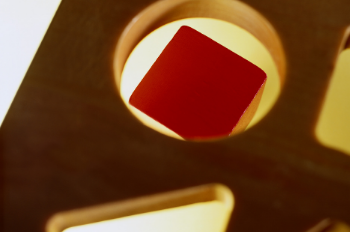For 100 years mathematicians have been trying to solve the question of whether it is possible to fit all four points of a rectangle into any given closed curve shape. Or, more bluntly, can you fit a square peg into a round hole?
Research so far had found that it was only possible to fit the proverbial square peg into a round hole if the peg in question was of certain proportions, until now…
Stuck in Japan due to Covid-19 restrictions, our mathematician Professor Andrew Lobb decided to tackle this conundrum, along with a colleague from Boston College, and together they cracked it.
To help explain it – let’s look at an age-old problem.
Most of us have had the irritation of a wobbly table at a restaurant. But, whilst some of us just wedge something under one leg to try and resolve the issue, this is actually a real-life illustration of the ‘square peg problem’.
Imagine a series of contour lines, a bit like an Ordnance Survey map, connecting all of the points of the same height on the restaurant floor. We could be free of the pesky table wobble by finding a contour line that all four table legs can sit on (i.e. the round hole into which our peg, or in this case table, can fit).
But what about different proportions of a table – could we still find a position where all four legs are on the same contour so we can eat our meal without spilling the drinks?
Until now it was thought that only pegs (or in our example, tables) of particular proportions could fit on the contour, but Andrew’s research has found a way that a peg (or table) of any proportion can fit within the smooth contour (round hole).
This may not help the next time you are faced with trying to eat a meal from a wobbly table (bad luck if you ordered the soup!), but for mathematicians it answers a question that has been puzzling them for a century, which in turn could unlock exciting new research avenues.







